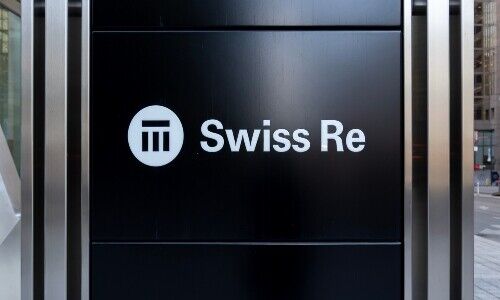Net Income at Swiss Re was affected by several factors last year. The insurer is nevertheless optimistic about 2023 after finishing the year with a strong fourth quarter.
Insurer Swiss Re saw its net income fall to $472 million last year from $1.4 billion the year before, although it ended the year on a solid note as net income for the fourth quarter was $756 million, according to a press release Friday.
Despite the lower annual figure, Swiss Re still managed to achieve positive net income for the year after challenging third-quarter results when it reported a net loss of $285 million through the first nine months of the year. Net premiums, meanwhile, rose to $43.12 billion from $42.73 billion a year earlier, an increase of 0.9 percent.
Covid-Related Claims
This year, Swiss Re aims to generate over $3 billion in net income as Covid-related claims abate, while benefitting from higher interest rates and enforcing cost discipline.
«2022 was a challenging year, marked by the war in Ukraine, surging inflation, the tail end of the COVID-19 pandemic, and elevated natural catastrophe losses. We have focused on proactively addressing these challenges while maintaining our very strong capital position. This has enabled us to take advantage of attractive market conditions at the January renewals while continuing our commitment to the ordinary dividend,» said Group CEO Christian Mumenthaler.
Dividend now in Dollar
Swiss Re is now reporting its dividends in dollars, with the board of directors proposing a dividend of $6.40 per share at the annual general meeting on April 12, compared to 5.90 francs between 2020 and 2022.
January Renewal Period
In its property and casualty business, Swiss Re said the renewals it saw in January reflect an elevated-risk environment. Treaty Contracts worth $10.2 billion were renewed on January 1, a 13 percent volume increase.
Swiss Re also managed to raise prices by 18 percent in the renewal round, which was above loss assumptions of 13 percent which takes into account inflation and updates to its loss model.
Loss Ratio Worsened
The combined ratio in property & casualty rose to 102.4 percent from 97.1 percent in the previous year as a result of the high losses while in corporate solutions, the loss ratio went up to 93.1 percent from 90.6 percent.
Return on investments (ROI) decreased to 2.0 percent from 3.2 percent a year earlier due to the decline in global equity markets and the related impact of market valuations on equity investments.


























